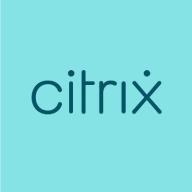

Oracle VM and Citrix XenServer compete in the virtualization platform category. Oracle VM may have the upper hand due to its strong integration with Oracle products and cost-effectiveness.
Features: Oracle VM supports diverse guest operating systems, delivers advanced management tools, and offers scalability, making it ideal for Oracle databases. Its cost-effectiveness is due to reduced licensing costs with Oracle products. Citrix XenServer provides high performance, supports both Windows and Linux environments, and features live migration.
Room for Improvement: Oracle VM could benefit from improved backup, networking stability, and performance synchronization. Users also find some management tasks complex. Citrix XenServer could enhance third-party integration, improve backup solutions, and offer web-based console access. Its current management tools are less efficient compared to competitors.
Ease of Deployment and Customer Service: Oracle VM is praised for its seamless integration with Oracle hardware and software, simplifying deployment for Oracle users. Citrix XenServer is recognized for its straightforward installation process. While Oracle VM's customer service is generally positive, Citrix receives commendations for its good technical support, especially with subscriptions.
Pricing and ROI: Oracle VM is free on Oracle hardware, offering a cost-effective solution with flexible CPU-based licensing that can reduce costs significantly. Citrix XenServer's free version with paid support is appealing for budget-conscious organizations, though licensing costs can be higher when expanded features or support are needed.
My clients generally maintain their Citrix infrastructure without shifting, suggesting stability and reliable operation as Citrix XenServer is fully established.
With valid licenses, we can access hotfixes, service packs, knowledge base, self-help tools, diagnostics, downloads, live chat, and phone support.
They do not provide adequate support for midsize businesses.
There appear to be very few engineers at Citrix who understand the problems.
The response time and quality of support could be improved.
Familiarity with Linux can enhance its performance and usability.
Citrix XenServer is definitely scalable enough.
It runs very stably.
I haven't had any significant issues with Citrix XenServer installations over the last 10-15 years.
Not every upgrade goes smoothly, and after an upgrade, it sometimes stops working.
Although the product is technically competitive, it is not widely known or used due to poor marketing.
Citrix needs to improve the hypervisor, specifically in security and performance.
We can implement high availability and live migration with pools, along with security and backup to enable role-based access control for safer management.
If I have limited systems and there is maintenance on the hardware, the Oracle systems are impacted.
Not every upgrade goes smoothly, and after an upgrade, it sometimes stops working.
Oracle VM provides automation capabilities in the new version.
It is cheaper compared to its competitors.
Organizations save substantial money because competing solutions, such as VMware, cost double or triple.
The pricing and licensing policy of Citrix XenServer is not transparent and quite confusing.
Oracle VM is not a very expensive solution.
The benefits from using Citrix include increased productivity, as users don't have to search for what they need to open.
The most valuable feature is transferring and sharing applications that allow users to move files between devices, including smartphones, tablets, and computers without needing USB cables, internet connections, or data usage.
It provides secure access to applications and resources, which is crucial for us and our clients.
If there is an issue with the operating system running on top of it, there's no primary and secondary domain, rather segregated I/Os, disks, memory, everything assigned to a logical domain.
It is easy to copy or clone one Oracle workstation to another.
Oracle VM's features perform better on Windows compared to iOS.
| Product | Market Share (%) |
|---|---|
| Oracle VM | 6.1% |
| Citrix XenServer | 4.9% |
| Other | 89.0% |

| Company Size | Count |
|---|---|
| Small Business | 29 |
| Midsize Enterprise | 8 |
| Large Enterprise | 18 |
| Company Size | Count |
|---|---|
| Small Business | 35 |
| Midsize Enterprise | 19 |
| Large Enterprise | 38 |
Citrix XenServer provides virtualization with high availability and robust security, offering seamless VM migration and centralized management through XenCenter. Its expansive compatibility and integration enhance its appeal, particularly for SMBs.
Citrix XenServer is recognized for its user-friendly virtualization capabilities, facilitating dynamic scalability and efficient resource management. It supports a wide range of operating systems and integrates with Citrix solutions for improved operations. Businesses benefit from its affordability and ease of deployment. Despite its strengths, users seek improvements in third-party tool integration, network and backup management, and storage flexibility. High costs, limited Linux support, system complexity, technical support, and hardware compatibility remain challenges. An updated and intuitive interface is in demand for more seamless operations across platforms.
What are the key features of Citrix XenServer?In diverse industries, Citrix XenServer is leveraged for server and desktop virtualization, cloud automation, and infrastructure management. Many deploy it for virtual desktop infrastructure, application delivery, on-premises data centers, and to support Citrix application delivery like XenApp and XenDesktop. Enterprises migrating from VMware often find Citrix XenServer cost-efficient for these applications, serving as a main computing platform for enterprise applications including ERP systems and SQL Servers.
Oracle VM for x86
Oracle VM for x86 is a Xen based server virtualization platform for public and private cloud and traditional on premise deployment. Oracle VM offers full lifecycle and application deployment from disk to cloud.
Designed and optimized for security, efficiency and performance Oracle VM supports major hardware vendors x86 and storage platforms and can run workloads on Linux, Windows and Oracle Solaris. Uniquely for our virtualization platform it offers live patching via Ksplice enhancing security and minimizing service disruption. Oracle VM supports hard partitioning which can significantly reduce software applications licensing costs.
Oracle VM for SPARC
Oracle VM for SPARC is a firmware based virtualization platform for Oracle and Fujitsu SPARC based servers running Solaris. Oracle VM supports hard partitioning which can significantly reduce software applications licensing costs.
We monitor all Server Virtualization Software reviews to prevent fraudulent reviews and keep review quality high. We do not post reviews by company employees or direct competitors. We validate each review for authenticity via cross-reference with LinkedIn, and personal follow-up with the reviewer when necessary.